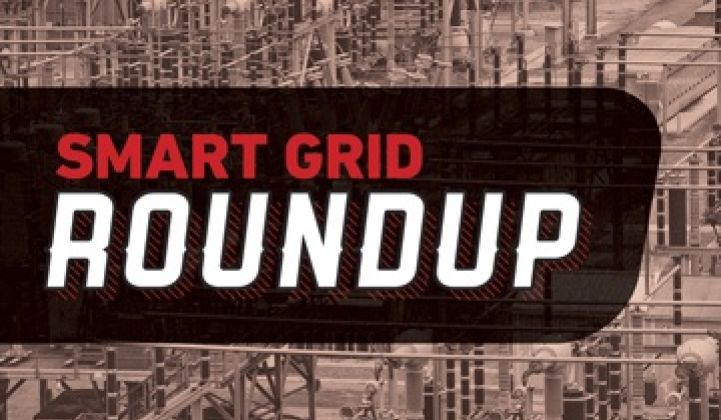ABB isn’t satisfied with the $9-billion-and-counting it has spent buying companies over the past few years. CEO Joe Hogan said the Swiss grid giant is still looking to acquisitions to “fill blank spots in automation and industrial control technology,” Reuters reported Monday.
While Hogan didn’t get into specifics, that sounds like ABB wants to move into the smart building space. We’ve seen competitors like Schneider Electric, Siemens and General Electric buying up parts and pieces of the overall grid architecture as it extends into buildings -- industrial motors and controls, low and medium-voltage building power equipment, and networks and software to control it all.
We’ve also seen a host of new managed platforms to link buildings to utilities in different ways, both from the giants in the space and from startups like Viridity Energy, Verisae, SCIEnergy, BuildingIQ or Powerit Solutions, which are bringing new building energy analysis and control technologies to market.
ABB has earmarked $9 billion to $18 billion for acquisitions over the next five years, but Hogan didn’t name any targets, though he ruled out rumors of a bid for U.S. controls giant Rockwell. In January, ABB bought low-voltage equipment maker Thomas & Betts for $3.9 billion, giving it a window into industrial power systems. Counting that buy as part of its five-year goals, that would leave $5 billion to $14 billion left to be spent.
ABB is already a giant in grid gear like transformers, switches, reclosers, capacitor banks and the like, as well as the software to manage them. But it, along with competitors, is busy buying up both established, specialty power companies and startups with new smart grid technology and software.
ABB’s big buys on the hardware side include efficient motor maker Baldor Electric for $4.2 billion in 2010. On the software side, it bought Ventyx for $1 billion in 2010, and combined its distribution grid software with Ventyx’s market forecasting, planning and data management smarts, as well as asset management from acquisitions like Insert Key Solutions, and Obvient.
ABB also bought Powercorp, an Australian provider of technology that integrates intermittent renewables like solar and wind into the grid. Hogan has identified wind and solar power as key growth areas for the company.
As for investments, ABB has put money into data center efficiency software startup Power Assure and plug-in car charging startup ECOtality, both involving future nodes -- data centers and plug-in charging stations -- that will need lots and lots of electricity over the coming years.
While ABB has moved from the grid into buildings, French power giant Schneider Electric has come from the opposite direction. Already a top contender in building management system (BMS) infrastructure, it bought the distribution grid assets of fellow French power giant Areva, and bought Spanish grid network and software player Telvent for $2 billion last year, bringing it a long list of utility customers and smart grid technologies.
Schneider’s APC and Square-D products dominate power electronics in that field, and it’s been buying lots of customer-facing startups to bolster its relationship with its buildings clients. The list includes data center equipment company Lee Technologies, Indian cabling company SmartLink Network Systems for $112 million. consulting and energy management firm Summit Energy for $268 million and French building management startups Vizelia and D5X for undisclosed sums.
Siemens, of course, is a giant in both grid and buildings. While it was slower to start acquiring companies in the smart grid, that changed in December when it bought smart meter data management software provider eMeter for an undisclosed sum. It followed that up with grid router manufacturer RuggedCom for $381 million in February. Siemens had about 18.5 billion euro ($27 billion) in cash as of this summer, giving reason to suspect it may go shopping again soon.
General Electric, meanwhile, bought industrial electric motor and controls maker Converteam for $3.2 billion and AC/DC conversion equipment maker Lineage Power Holdings for $520 million last year, and bought smart grid software companies Energy Control Systems and Opal Software in 2010. It also has a demand response platform that links in with its advanced grid controls platform, all of which it’s offering as a managed service.
Where do we see the fruits of these acquisitions? The first may be in integrated products. Utilities operate a bewildering array of incompatible, legacy technology platforms, and spend as much as half or more of their overall software budgets on the task of integrating new platforms into all those existing systems. Anything that lowers that cost -- whether it be by closely-knit tech partnerships or in-house integration -- will be welcomed by utilities.
The second fertile ground for these mega-partnerships is in linking smart grid to smart buildings. Siemens has been trying out linkages between the two in projects like its German virtual power plant project, and in plans for a demand response-grid platform for New York City, to name a few. And Schneider is testing a mix of smart city technologies in undisclosed locations in France, China and the U.S., Michel Crochon, head of the company’s infrastructure unit, told Bloomberg earlier this month.
And that’s just the big grid players. Coming from the opposite direction, we’ve got giants like Johnson Controls, Honeywell and IBM taking enterprise-wide approaches to the building energy management. We’ve also got the likes of EnerNOC and Constellation Energy giving their demand response customers new efficiency and power procurement services.



